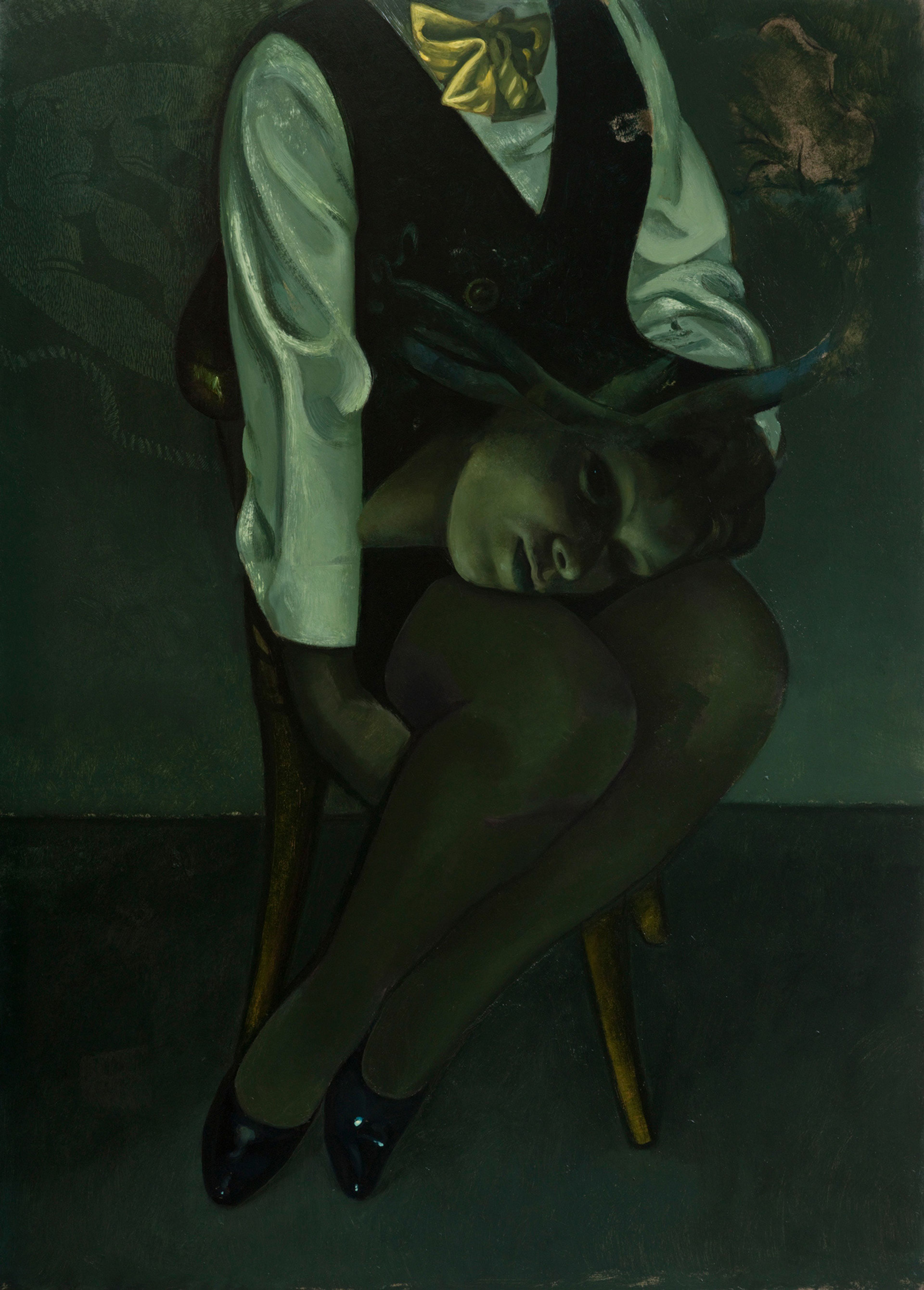Museo Tamayo, Mexico City
June 27–October 7, 2018
Victor Man’s practice focuses on the potentiality of paintings elaborating a continuity with its own history and exploring ways of redefining it today. Man’s influences are both classical and contemporary elements, so he brings forward iconographic references from Western art while creating his own. Furthermore, using a non-linear narrative, he is able to blend and dilute the boundaries between past and present, fiction and reality. El candelero gathers seven portraits of an anonymous seated, genderless and decapitated person, which is a subtle reference to Virginia Woolf’s novel Orlando about a poet who changed his gender.
The exhibition title, for its part, refers to the medieval term used to designate the person in charge of cutting the candle wick in order to light it. And as in most of Man’s paintings, it alludes to a historical reference, in this particular case to the Greek Acephalous. This series of works has a direct connection with astronomer and philosopher Giordano Bruno (Nola, Italy, 1548 – Rome, Italy -1600) and his cosmology on different “earths” moving around “suns” and receiving light and heat from them. In this case, the paintings are re-enacting the two motions of revolution and rotation. In the first movement, the position of the sun is taken by the viewer looking at the paintings around the space as if these were the planets. In the second one, as the viewer moves and gets closer to the paintings, he finds that each head has a slightly different position, thus reenacting the revolving rotation of the planets. Defying the regular conventions and common genres in painting, Man creates an absurd gesture: a (iconographic) headless portrait. On the other hand, he carries out a similar act to that of the chandler by cutting the upper end of the candle to ignite the fire and put his trade into action.
Learn more at Museo Tamayo.
